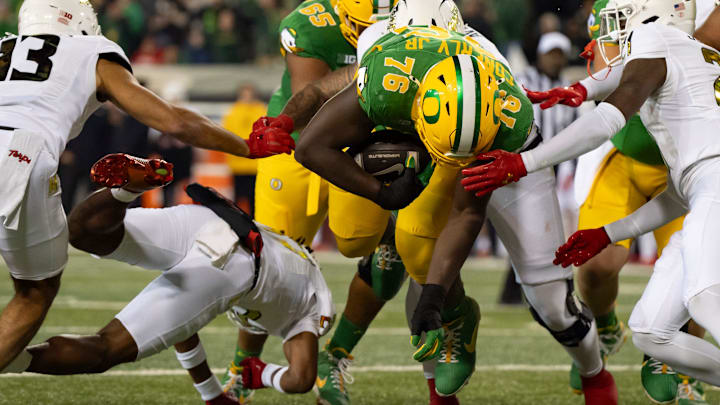Imagine the NFL with no collective bargaining agreement, no salary cap, no draft and unrestricted free agency for every player every season and even in the middle of seasons.
That's the current state of college football.
It's so whacked that last year former Holy Cross quarterback Matthew Sluka left the UNLV Rebels after leading them to a 3-0 start because he was upset with his NIL deal, verbal promises that weren't kept. Now he's transferred to his third school, James Madison, likely to start for his old coach with the Crusaders, Bob Chesney.
It's so upside-down that 17-year-old high school senior Jackson Cantwell signed an NIL deal with Miami worth $2.5 million in Year 1.
Cantwell cracked back on reporters who suggested he chose the Hurricanes because of the money, however. He told Jeff Sawtell of DawgNation, “I’m going to Miami because I believe in the coaches, in the system, and in the vision."
Relationships won out in Miami, he said.
Without faulting any student-athlete's decision, it's the system that's gone bat-guano crazy. Rivals analyst Keegan Pope revealed that Texas doubled the NIL offers made by Oregon and Georgia to lock down five-star linebacker Tyler Atkinson.
Texas offered double the NIL money than #Georgia and Oregon to lock down 5-star LB Tyler Atkinson, per Keegan Pope. 😳
— Dawg Recruiting (@DawggRecruiting) July 26, 2025
Atkinson’s recruitment ultimately came down to Georgia and Texas in the end. pic.twitter.com/ZWV3C96BB9
At USC, high school tight end Mark Bowman gained an NIL deal that's projected to pay him between $8 and $10 million, one that offers him a retention bonus as a recruit, according to reports from On3's Scott Schrader.
USC 5-star commit Mark Bowman is expected to be the highest-paid TE recruit of all time, @PeteNakos_ reports✌️
— Rivals (@Rivals) July 23, 2025
Details: https://t.co/wFcAmj8wIq https://t.co/GDKqvDQDgj pic.twitter.com/O0Qd5cy2FJ
The money is so premature and ridiculous that it makes following college football and college football recruiting a dizzying prospect. There are no apparent limits and little transparency. Duck Sports Central's Scott Reed notes that schools with massive donor pools and infrastructure remain in position to dominate the game.
While the money has always been a part of big-time college football, in this new era it threatens to drown it out entirely. It's all gas no brakes, all of the time.
Week-to-week, parity and competitive balance appear to be at an all-time high. Last year Vanderbilt took down Alabama. Kentucky beat Ole Miss in Oxford. Indiana made the College Football Playoff.
At the end of the year, however, the same six-to-eight schools have a real chance of winning the national title. Staying on that list requires paying a lot of money for players, more money every year. Already the top rosters reach $50 million. Bowman will make more than a handful of NFL tight ends.
So far the Ducks have been able to navigate the madness with a sound plan for player evaluation, development and competitive deals. It's a challenge that requires a lot of fluidity, planning and judgment.
What you pay and who you pay become critical decisions. The Ducks have chosen to prioritize their existing roster, focusing on player retention. It's a balanced approach that makes them one of those 6-8 schools, at least for now.
The uncertainty comes in when teams find themselves having to drop out of the bidding for top players. Bowman, Cantwell and Atkinson are the building blocks of a juggernaut, but acquiring them creates a lot of pressure for LIncoln Riley, Mario Cristobal and Steve Sarkisian.
Which means some of that top talent could fall into the portal, triggering a fresh round of craziness.
